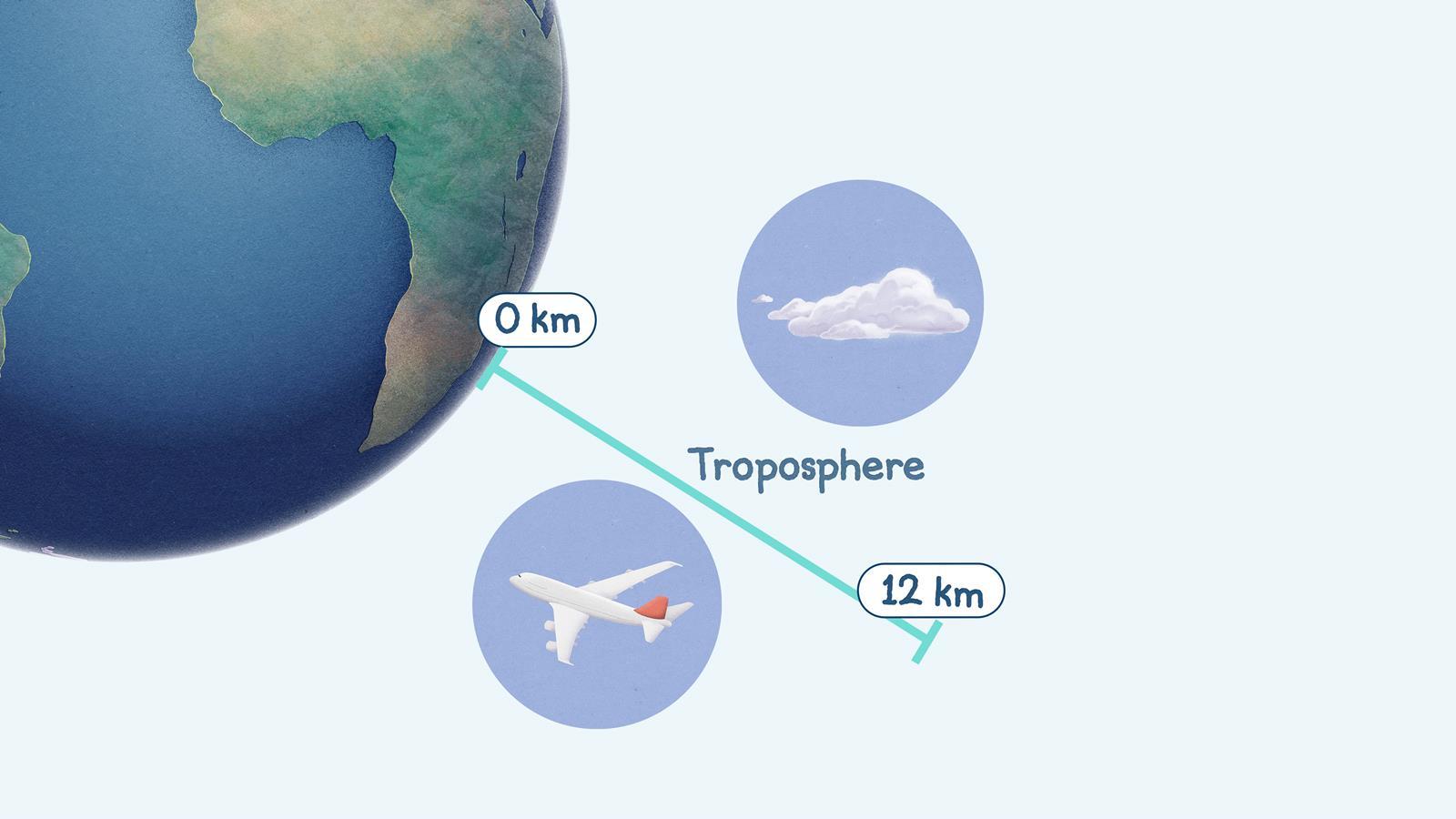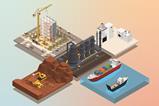Guarantee successful learning about the atmosphere’s layers with this poster, fact sheet and out-of-this-world resource

The atmosphere surrounds and protects Earth, making life possible.
Earth was formed around 4.6 billion years ago. When the Earth was very young, carbon dioxide (CO2) made up most of the atmosphere and there was no free oxygen (O2).
Over billions of years, oxygen levels increased (and carbon dioxide decreased) because plants grew and used the carbon dioxide for photosynthesis while producing oxygen.
Did you know …?
Oceans formed when the water vapour in Earth’s early atmosphere cooled and condensed. Carbon dioxide dissolved in the oceans and became locked up in sedimentary rocks.
Nitrogen gas (N2) formed when the ammonia (NH3) in Earth’s early atmosphere reacted with the oxygen produced by plants. Nitrogen is a very stable gas, which is why it now makes up most of the atmosphere.

-

-

Earth's atmosphere classroom activity
Learners use the infographic poster and fact sheet to complete a DART (Directed Activity Related to Text) activity with three levels of scaffold. The DART activities include reading comprehension, creative writing, data analysis and calculations.
Today, Earth’s atmosphere has five main layers; let’s take a journey through them.





Range: from Earth’s surface up to about 12 kilometres depending on the location (higher at the equator and lower at the poles)
Most of Earth’s weather happens here
The temperature decreases with altitude
Range: from the top of the troposphere to about 50 kilometres above Earth’s surface
Contains the ozone layer, which absorbs and scatters ultraviolet radiation from the Sun and therefore protects us from its harmful rays
Range: from the top of the stratosphere to about 80 kilometres above Earth’s surface
The coldest layer
Most meteors burn up here after entering the atmosphere. So, when you see a shooting star, it’s happening in the mesosphere
Range: from the top of the mesosphere to about 700 kilometres above Earth’s surface
The temperature is increased significantly by the absorption of solar radiation
Auroras (northern and southern lights) happen in the thermosphere
The International Space Station orbits here
Range: from the top of the thermosphere to about 10,000 kilometres above Earth’s surface
The outermost layer
Particles are very sparse here. They can travel hundreds of kilometres without colliding with each other and they gradually escape into space
Satellites orbit Earth here
Did you know …?
Ozone (O₃) is a molecule made up of three oxygen atoms. It’s relatively rare in the atmosphere but its presence is vital. Human activities, particularly the release of chemicals called chlorofluorocarbons (CFCs), have damaged the ozone layer. CFCs mostly come from air conditioning and refrigeration.
More resources
- Find out how to use real-life examples and historical information to help students get to grips with the structure and composition of the Earth in our CPD article.
- Help students visualise the structure of the Earth and boost their confidence with plotting information on scales by drawing a scale model of the Earth and its atmosphere with this resource.
- In our Carbon cycle game, students take on the role of a carbon atom as it cycles through the Earth to better understand the carbon cycle.
- Ensure your students have a firm understanding of the chemistry behind climate change with our CPD article on How to teach the carbon cycle at 11–14.
Did you know …?
The Kármán line – considered to be the boundary between the Earth’s atmosphere and outer space – is 100 kilometres above Earth’s surface, in the lower part of the thermosphere. When astronauts cross the Kármán line they officially become space travellers.

Get the full set of Earth posters
This poster fits with three others to make one large poster of the Earth. Complete your giant Earth poster by downloading...
- the first section: Earth's structure, with information card and pie chart activity.
- the second section: Earth's resources, with scaffolded DART questions and calculations activity.
- the final section: Earth's atmospheric pollution, with an activity to develop critical thinking and scientific literacy within this context.
All earth illustrations © Dan Bright
Downloads
Earth's atmosphere poster
Handout | PDF, Size 1.12 mbEarth's atmosphere fact sheet
Handout | PDF, Size 0.23 mbEarth's Atmosphere student worksheet unscaffolded
Handout | PDF, Size 0.17 mbEarth's atmosphere student worksheet partially scaffolded
Handout | PDF, Size 0.16 mbEarth's atmosphere student worksheet fully scaffolded
Handout | PDF, Size 0.19 mbEarth's atmosphere teacher notes and answers
Handout | PDF, Size 0.17 mbEarth's atmosphere fact sheet
Editable handout | Word, Size 0.48 mbEarth's atmosphere student worksheet unscaffolded
Editable handout | Word, Size 0.51 mbEarth's atmosphere student worksheet partially scaffolded
Editable handout | Word, Size 0.51 mbEarth's atmosphere student worksheet fully scaffolded
Editable handout | Word, Size 0.51 mbEarth's atmosphere teacher notes and answers
Editable handout | Word, Size 0.43 mb













No comments yet